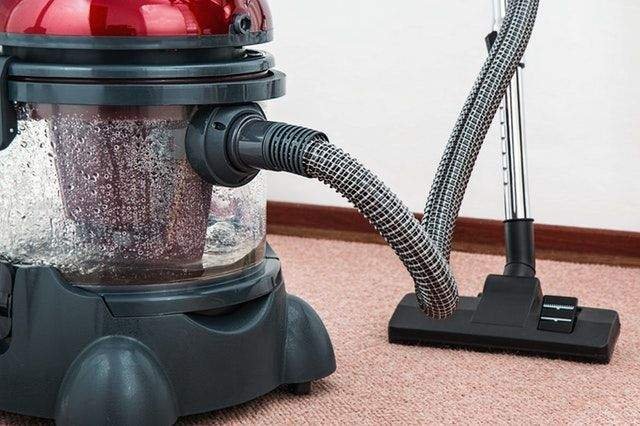Carpet Stain Removal Guide to Remove 6 Types of Stains
Spills happen, and they’re usually no big deal, but if you don’t get to them quickly enough, these spills turn into stains — and stains can be infinitely harder to remove. Harder, but not impossible. The key to treating a stain is knowing how to treat it properly.
Pet stains need to be dealt with differently than food stains, and oil or grease stains need to be treated different than ink stains. Whatever kind of stain is diminishing the aesthetic appeal (not to mention cleanliness and health) of your rug, there’s usually a way to remove it, or at least reduce it’s appearance.
How?
Read on! Here’s how to treat the most common carpet stains.

1. Fruit Juice or Wine
If you have kids or host parties, this sort of stain is likely a regular occurance. To treat it, use two tablespoons of white vinegar with one tablespoon dishwashing liquid and two cups of warm water. Pour as much as needed to saturated the affected area on the stain and allow it to sit for ten minutes.
After this time has elapsed, blot the stain with a clean, sponge or white cloth that’s been dipped and wrung out in the remaining cleaning solution. Repeat until the stain is removed.
2. Oil/Grease
For this tough stain, you’re going to use some cornstarch to soak it up. Sprinkle the cornstarch on the stain and allow to sit for an hour. Use as much as needed to cover the stain, but not so much that it piles up. Once the time has elapsed and the cornstarch has been soaked in, sweep or vacuum any remaining starch and then use a teaspoon of dishwashing liquid (more if needed) and a clean white cloth to dab the stain. If the stain is particularly set, then you may want to use a nail brush to get into the fibres. Finally, remove the residue with warm water and a clean damp cloth.
3. Urine
Kids or pets have an accidents. It happens. You don’t want to let these stains sit too long, since urine is replete with dangerous bacteria that can cause illness. To treat this stain, combine one tablespoon of dish soap, two cups of cold water and two tablespoons of white vinegar.
Mix well and apply it to the affected area. Blot the area, beginning on the inside of the stain and gradually moving out to the perimeter. Once the stain has been saturated, use another clean, dry cloth and blot the area again until it is mostly dry. If the stain persists, break out the hydrogen peroxide, using a few drops. Blot again until absorbed.
4. Ink
Ink is insanely difficult to remove, so it requires some tough love. Thankfully, you probably have the treatment lying around your house. Try rubbing alcohol first, blotting a saturated cotton swab over the stain until it disappears. If that doesn’t yield results, use acetone or even nail polish remover and follow the same process.
5. Blood
First you’re going to loosen the blood stain with a steel brush. Firmly, but not aggressively, brush the stained area. Now you’re going to use a combination of one teaspoon of dish soap and a cup of cool water to blot the stain. Be sure to use a clean white cloth to avoid unwanted colour transfer. Apply the mixture and continue blotting until the stain is gone.
6. Grass
Dish soap is your first line of defense. Apply it onto the stain directly and blot with a sponge or clean white towel. In the event the dish soap isn’t working, apply white vinegar directly to the area and blot again.
When to call in the pros….

Sometimes, no matter what you try, these DIY solutions just won’t cut it. Maybe the stain isn’t budging, or maybe you are dealing with a particularly temperamental carpet or rug. Either way, carpet cleaning by professionals is your best bet. This will not only ensure you get the best results, but it will also make sure your carpet is treated without detriment to your carpet or health.






